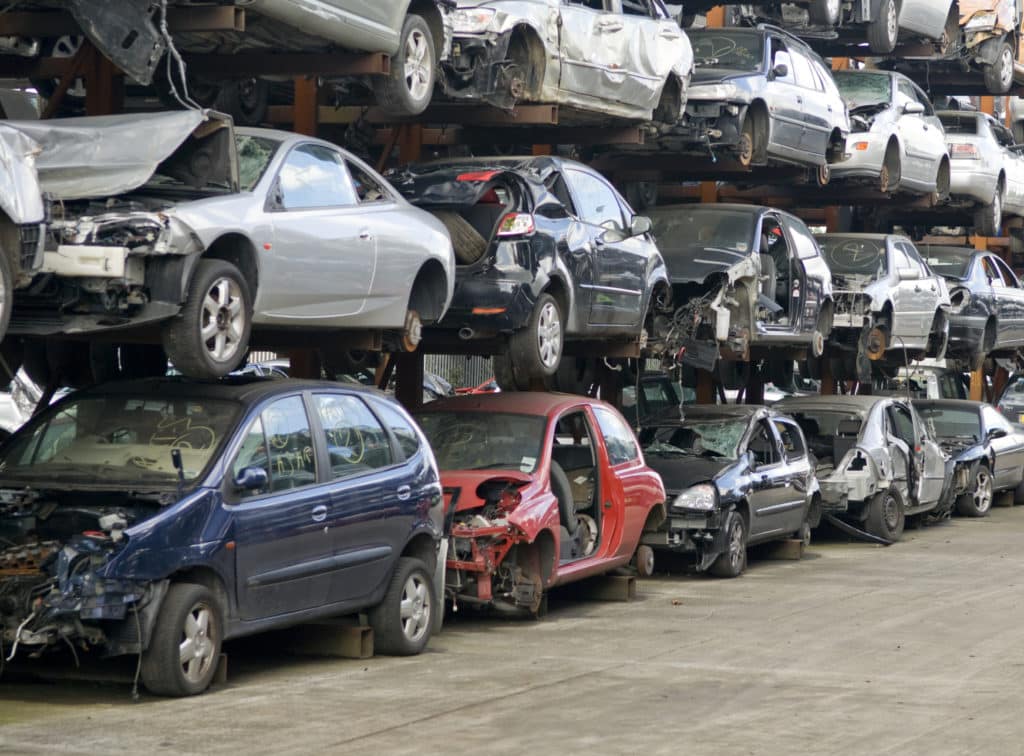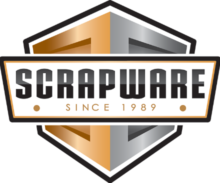Reclaiming scrap metal from old automobiles is a success story for the scrap metal recycling industry. But what about the parts of a car that are not valuable metal?
These leftovers are nicknamed “fluff” and are facing some key issues today.

What is Fluff?
When a discarded car reaches an auto recycler, it will go through a number of steps in the recycling process. First, it may be dismantled to retain any useable parts, recover any fluids and batteries. Once the hazardous materials have been removed and the salvageable parts recovered, the car is ready to be crushed and then put in an automobile shredder. After shredding, ferrous metals and non-ferrous metals are extracted to be recycled and reused for other purposes. Generally, automobile shredders have been able to recover about 80 to 85 percent of the vehicle weight by processing the scrap metal. The plastics, fibers, glass, foam, rubber, wood, sand, dirt, and other materials make up the remaining 15 to 20 percent and is known as automotive shredder residue (ASR), or auto fluff.
In the United States, about five million tons of fluff are produced every year, and much of this has been disposed of in landfills. A number of factors, however, have recyclers examining different options to decrease the amount of fluff landfilled and utilize the material in more creative ways. Landfilling is expensive and it may be more economical to extract and reuse other material in the fluff. Additionally, because fluff may contain hazardous materials like PCBs (polychlorinated biphenyls), it is considered a special type of hazardous waste more rigorously regulated by federal, state and local laws.
After being approached by industry back in 2013, the Environmental Protection Agency (EPA) provided new interpretations of these regulations, allowing plastics to be recovered during the recycling process as long as the levels of PCBs do not exceed 50 parts per million. This new interpretation may reduce the amount of ASR that is landfilled each year by more than one million tons and may also help improve the material recovery rate for end of life vehicles to more than 90 percent. In a nutshell, recovering more plastic from ASR saves money, reduces greenhouse gas emissions, conserves energy and saves landfill space.
What Can We Do With Fluff?
Using car fluff to replace dirt as a landfill cover is one innovative use today, explains one industry professional who has studied this issue, Paul Lerner of Davis Industries, a scrap metal recycling company in Lorton, Virginia. Using fluff as an alternative landfill cover saves money, speeds up operations and is a more environmentally preferable approach than dirt. Fluff provides these benefits because, unlike soil, it does not need to be stripped off the landfill each morning. This reduces the amount of soil used. Additionally, fluff is less expensive than soil. The ASR cover is placed over the landfill at the end of the day so the thrash does not fly away, Lerner says. It reduces odors, and provides a more solid base on which vehicles may move and work.
Another important innovation in auto fluff recycling is using ASR for energy recovery. For instance, the fluff itself may be used as fuel in cement kilns. The EPA a number or years ago awarded a grant to California to study the use of ASR as a supplemental fuel in cement kilns, to both fuel and kilns and manufacture the cement. According to the California agency’s report, the process results in a mix of ASR that has a very high temperature—about 13,240 BTUs per pound, which is a higher temperature than most types of coal. According to the project highlights, about one million tons of ASR could be recovered for fuel in the US using this option, which would comprise about six percent of the US cement manufacturing industry’s energy consumption and save $50 million annually (assuming $50 per ton of coal.) One million tons of avoided landfilling would save automobile shredders about $20 million annually.
Another option is turning the fluff into fuel itself. ASR is full of plastics which are made from petroleum. Efforts are being made to break down the petrochemicals in those plastics to transform them back to fuel. Lerner says, in his opinion, “the greatest potential is in isolating the petroleum.” Patents exist today for technology allowing the conversion of automobile plastic residue into synthetic crude oil and diesel fuel.
The Changing Nature of Fluff
It is important to address the issue of fluff, as there may be more fluff to deal with in the future, Lerner points out. This is because as cars are being made lighter and more fuel efficient, they are utilizing less and less metal and more plastics. Not only are the materials becoming lighter, they are becoming more complex as they are called upon to perform different functions. Auto glass, for instance, is being layered with new chemicals and coatings or embedded with other materials so that is suitable for projecting head-up displays. “Cars are being made lighter, with more plastic. That makes it more complicated to recycle them,” says Lerner.
Industry will need to look for engineering solutions in manufacturing so a car body can be disassembled in such a way so as to make it easier to recycle all the parts. In fact, the EPA is pushing vehicle manufacturers to design vehicles with recovery in mind and to reduce toxic and hazardous elements in vehicle shredding. As the EPA stated in its project description of fueling cement kilns: “recycling material that would otherwise become waste can generate a host of environmental and economic benefits while protecting people’s health.”
ScrapWare Corp., of Rockville, MD, has been providing software to the scrap metal recycling industry for over 30 years. ScrapWare uses an Oracle database to provide a cloud-based software solution to manage all aspects of a recycling business. With numerous modules, extensive technical support, remote installation and online training, ScrapWare helps recycling companies with compliance, efficiency and profitability. Check out ScrapWare’s website, read the user testimonials, and see its offerings for your recycling software solution.
